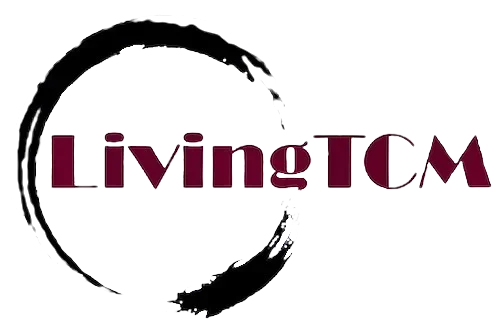想睇中文版?
經法師引線,第一次跟老中醫會面就安排在星期四的下午。法師還客氣說自己多言,提醒我要買點甚麼,以合中國傳統文化之道,這點我當然明白。但法師由衷的提醒,亦足見其細心及用心。
去到店前,在膠簾後面看到一位老伯背著門口的身影,直覺告訴我他是一位病人。為免打擾老中醫診症,故在門外等了一會。後見病人挪了挪身子且在喝藥,故決定登門打擾。映入眼前的是一位中等偏瘦身形的長者,面容清爽,眼神有力而易於親近。打過了招呼,道出了法師的名字,老中醫報以微笑。因診症與煲藥已讓他忙個不可開交,故只能偶以寒喧兩句。
由於店面不大,故在有人到診時,我也得挪動身子好讓出通道或座位。診症桌在右角最入之處,其前右方是一列百子櫃,診桌的左方有一空間放上了四個煎藥用的火水爐。百子櫃對面是一列座地矮櫃,放了部殘舊,只能播放黑白影象的彩色電視,左邊近門處有洗濯槽,中間留出一條不到三尺通道。看著老中醫執藥, 聽著他診症,對我而言,也是很新鮮的事。
縱然能聽到求醫者描述自己的病徵,也聽到老醫生問診,也看著他執藥,但由於學識淺薄,藥名藥理認識不多, 因此想幫也幫不上甚麼忙。
終於等到一個機會,就是把他手上拿著正要清洗的藥煲搶過來,因為洗煲不用懂中醫……終於不用再做一隻木雞了。看看托著煲底的右手,駭然發覺黑了一大片。
隨後, 開始了參與煲藥的過程:倒藥,洗煲、加藥、加水、點火。因不知該放多少水,故總要在加水後向老中醫請示請示。他也鄭重地告知那張藥單夾是配那個火爐[1],千萬不能弄錯!洗煲可以沒有中醫知識,但煲藥卻蘊含不少!
執藥過程中,他也向我介紹了一些藥名及藥性,教導一些我能理解的醫理。他總害怕擾亂了我在學校學回來得概念,雖知書本與臨床總有著距離,我想在中醫由甚,它有很多大小不同的醫理系統。所以他也只是點到即止。[2]
老醫師執好了藥,我負責把藥倒進藥煲及加水。我請教他水跟藥的比例如何確定。他說一看材料,二看藥性。有些藥材較吸水,水自然就要多落些,有些藥如滋補的要煲久一些,也要多下水;如一些藥只在於助其藥性以解表的如感冒藥,水則可以少一些,如是不一而足。他又說例如古書云「5碗水煎作1碗」,為何會有這樣的說法?是因為古代計時器不普及但灶都是大同小異, 都是燒木頭的,火力接近。[按:就是比較標準化] 所以才用「量」來作指標, 是一個方便吧了。但現在的燃料爐具各式其色,依古書上這句說話就難免出現偏差了。所以看古書時,不可單看文字,也得結合當時的時代背景。 記住:「這樣才稱得上是「學生」, 否則就是「學死」了 !」——他打趣地說。
「醫書不可不讀,卻不可死讀」— 是今天我從老中醫身上學到的第一個道理。
托法師的人情,老中醫沒有嫌棄我這個中醫童蒙[3], 就這樣,我開始了我星期四的中醫學徒生涯!
– – – – –
[1] 他認為火水爐是煲藥的最佳伴侶, 皆因火力適中。所以他堅持用火水爐煲藥,幾十年不改。
[2] 言談間,他提到了「圓運動古中醫」,對它的評價頗正面。我心中暗喜,因那也是我喜歡的一個中醫學系統,也許這也是一種緣份。
[3] 仍記得在猶疑該否讀中醫時,貪著玩,得了一個蒙卦。卦詞這樣說:「亨。匪我求童蒙,童蒙求我。初筮告,再三瀆,瀆則不告。」對我而言,在學習態度上很有警醒的作用。
*相片是老醫師執藥教我藥名時拍下的。共認識了四種藥名及其外貌,回家就查其藥性,總要一點一點, 一個一個地記下來。
Guided by the nun’s referral, my first meeting with the old Chinese doctor was arranged on Thursday afternoon. The nun politely me to bring something along as gift, in accordance with the way of traditional Chinese culture. Her reminder was full of thoughtfulness and dedication.
Upon arriving at the shop, I glimpsed the silhouette of an elderly man behind the plastic curtain near the door, and my intuition told me he was a patient. To avoid disturbing the old Chinese doctor during his consultations, I waited outside for a while. Later, seeing the patient adjust himself and sip his medicine, I decided to enter. Before me stood a slightly slender elder with a clear complexion, powerful yet approachable eyes. After exchanging greetings and mentioning the nun’s name, the old Chinese doctor responded with a smile. His busy schedule with consultations and medicine preparation left little room for more than a brief exchange.
Due to the limited space in the shop, whenever someone arrived for a consultation, I had to move to make way for them. The consultation table was in the far right corner, with a row of medicine cabinets to its right and four stoves for boiling medicine to its left. Opposite the cabinets was a low cabinet where an old color TV played black-and-white images, and near the door on the left was a wash basin, leaving a narrow passage of less than three feet. Watching the old Chinese doctor prepare and administer medicine was a completely new experience for me.
Although I could hear patients describing their symptoms and the old doctor questioning them, and watch him prepare medicines, my limited knowledge prevented me from offering much help in terms of the names and properties of the medicines.
Finally, an opportunity arose when I grabbed the medicine pot he was about to clean, as washing the pot didn’t require understanding Chinese medicine… Finally, I didn’t have to be a dumbfounded anymore. Looking at the right hand supporting the pot’s bottom, I was shocked to see it was stained black.
Afterward, I began participating in the process of boiling the medicine: pouring the medicine, washing the pot, adding ingredients, adding water, and lighting the fire. Not knowing how much water to add, I always had to consult the old Chinese doctor after adding water. He solemnly reminded me that the fire pot should match the prescription on the chart—never to be confused! Washing the pot might not require knowledge of Chinese medicine, but boiling the medicine involved much more!
During the process of preparing the medicine, he introduced me to some names and properties of the herbal medicines, teaching me some principles that I could understand. He was always afraid of confusing the concepts I had learned in school, knowing there’s always a gap between theory and practice, especially in traditional Chinese medicine, which has many different systems. Therefore, he only touched upon the basics.
Once the doctor finished preparing the medicine, I took over pouring it into the pot and adding water. I asked him how to determine the ratio of water to medicine. He said it depends on the material and the medicinal properties. Some herbs absorb more water, so more water is needed. Tonifying herbs need longer boiling and more water, while herbs for exterior symptoms like colds require less water. He also mentioned an ancient saying, ‘5 bowls of water to boil down to 1 bowl,’ explaining that this was due to the standardized stoves in ancient times, where fire intensity was similar. [Note: Standardization was for convenience.] However, with today’s varied stoves and fuels, such rules may vary. When reading ancient texts, one must consider the historical context, not just the words. Remember: ‘This is what makes a student, not just learning by rote!’—he joked.
‘One must read medical texts, but not blindly.’ This was the first lesson I learned from the old Chinese doctor today.
Thanks to the monk’s recommendation, the old Chinese doctor did not disdain my novice status in Chinese medicine. And so, my apprenticeship in Chinese medicine began on Thursdays!”
(Date of original post: 2016-09-22)


